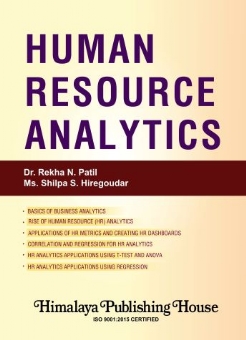
Competitive Intelligence – ‘Millennium
Intelligence for Winning Businesses’
A Book from Himalaya Publishing House
ISBN 978-93-5202-987-7 PCG 665
Author(s) : Amit Johri Akshai Aggarwal
Why Engage in Intelligence?
‘Every
morning, a Gazelle awakens in Africa.
She knows
she will have to run faster than the fastest Lion that day
Or she will
die.
Every
morning, the Lion awakens
He knows he
will have to catch the slowest Gazelle
Or he will
die of hunger.
It does not
matter if you are the Gazelle or the Lion
When the Sun
rises, you should start running’.
(Muhammad
Ibn Raschid Al Maktum)
A company’s
environment is no longer what it used to be. It is deeply affected by a much
higher flow of information and a fast pace of technological change. Also the
pressure to innovate and to innovate fast is higher than ever before.
Increasing
globalization of markets makes monitoring and analysis of the competitive
landscape important. No company, regardless of size, can afford not be informed
about its market environment, competitor’s products, prices, sales channels,
and communication activities.
Competitive
pressure is on the rise because of new market entrants, technological progress,
and increasing globalization.
Governments
are also getting more involved in business affairs, showing clear signs of
protectionism and preferential treatment towards state-owned companies.
The reaction
of competitors to a company’s strategy and the recognition of early warning
signs in the market needs to be incorporated into an evolving corporate
strategy. Without actual (market) information, product development, product
adjustment, market development are based on mere assumptions and is similar to
driving a car in fog.
Intelligence is therefore of utmost
strategic importance for every company.
Even the German Gods Engaged in
Intelligence
German God
Odin had two agents called Hugin (Thought) and Munin (Memory). Disguised as
ravens, they both flew out in the world each day to gather information for
Odin. Nothing could hide from their discerning gaze, and when they returned to
Odin, they would land on his shoulder and whisper their thoughts and memories into
his ear.
Intelligence is a systematic
management method.
Competitive Intelligence is an approach to study and monitor
the competitors and market environment in a continuous, systematic and a
thorough manner whilst transforming this information into useful decision
support to achieve strategic competitive advantage.
Tactical/Strategic Intelligence
Instruments and Methods
‘If you know yourself and you know your enemy, you will
win each battle
If you know
yourself but not know your enemy, you will lose one battle for each battle you
win
But if you
know neither yourself nor your enemy, you are a fool and you will lose every
battle’
(Sun Tzu, Art of War)
Intelligence deals with a long-term
strategic method as well as a short-term tactical instrument. Ideally,
Intelligence deals with both.
The Value
Intelligence
is of strategic importance for every company. In addition, by providing
relevant past, present and future information of the competitive landscape,
intelligence serves not only strategic but also operational and tactical
decision-making and helps to identify emerging opportunities and risks early
on. In practice, Intelligence and reaching the related goals and targets give
companies a diverse range of benefits.
Competing for Business
To know your
enemy, you must become your enemy said Sun Tzu in The Art of War. Sometimes
competing for business can seem like a battle, where the odds are stacked against
you and the odds of success are insurmountable.
All is not
lost however Competitive Intelligence
is the key weapon in leveling the battlefield and allowing you to compete with
the advantage of knowledge on your side.
Competitive Intelligence is the ethical
gathering and analysis of competitor, customer and market information from open
sources. This analysis is used by organizations to make better strategic
decisions. It is the difference between Competing and Winning.
Embedding
Competitive Intelligence as a core management process is increasingly essential
towards survival and growth in the 21st century.
Best Practices for Managing
Competitive Intelligence: Qualify Your Tenders
Tendering is
expensive; Compete only where it makes good sense; Learn as much from loosing
as from winning.
Each time
you participate in the tendering process, you learn a little more about what it
takes to win. As Sun Tzu noted ‘Opportunities multiply as they are seized’.
Competitive
Intelligence What you don’t know Will
Hurt You
In today’s
complex and fast-moving world, what we need even more than foresight and
hindsight is insight – Napoleon Bonaparte
Start with the Customers Not the
Competitors
Management
Guru Peter Drucker said “the purpose of business is to create and keep a
customer”. Obviously, right? Companies that provide prospects with what they
want are rewarded with sales, customers and market share. Simple!
How Industry forces Influence
Profitability?
In “Business
@ the Speed of Thought : Using a Digital Nervous System”, Bill Gates wrote :
“The most meaningful way to differentiate your company from your competition,
the best way to put distance between you and the crowd, is to do an outstanding
job with information. How you gather, manage and use information will determine
whether you win or lose”.
Staying Hyper Competitive
There is a
Chinese saying:
Know
thy-self, know thy competition, and get it right almost every time.
Know
thy-self, not know thy competition, and get it right about half the time.
Not know thy
self, not know thy competition, and get it wrong almost every time.
We live in a
world driven by hyper competition. The knowledge base for managing in this
hyper competitive environment is called Competitive
Intelligence.
“Strategy
without Tactics is the slowest route to Victory. Tactics without Strategy is
the noise before the defeat”. Sun Tzu “The Art of War”



